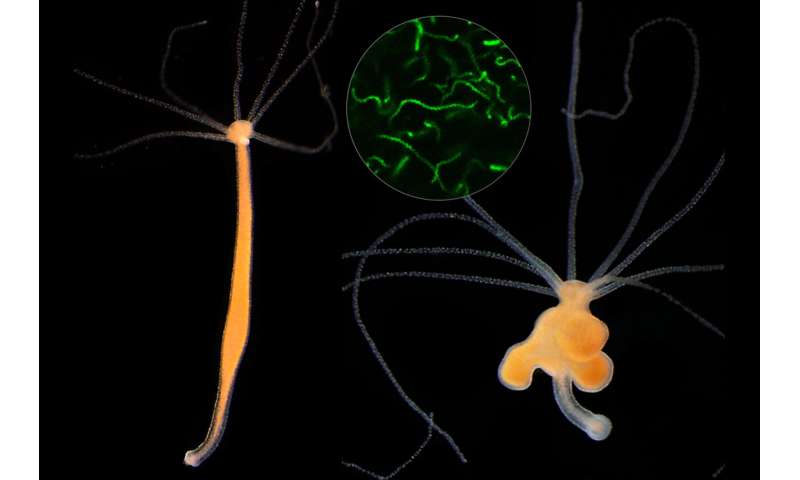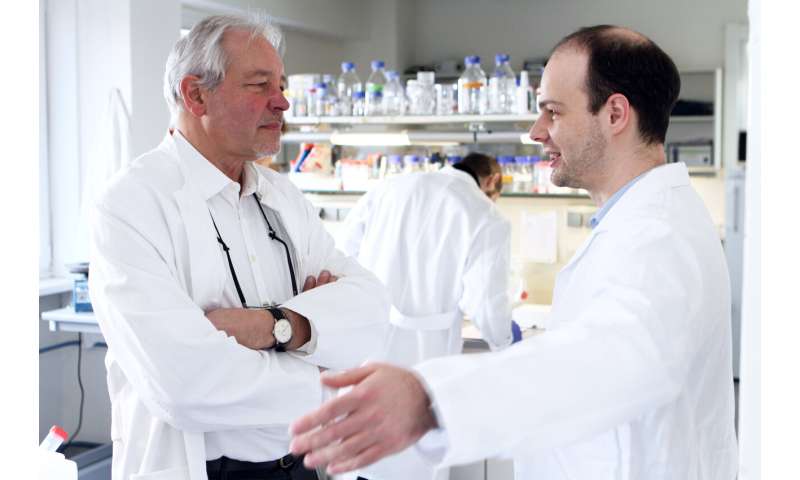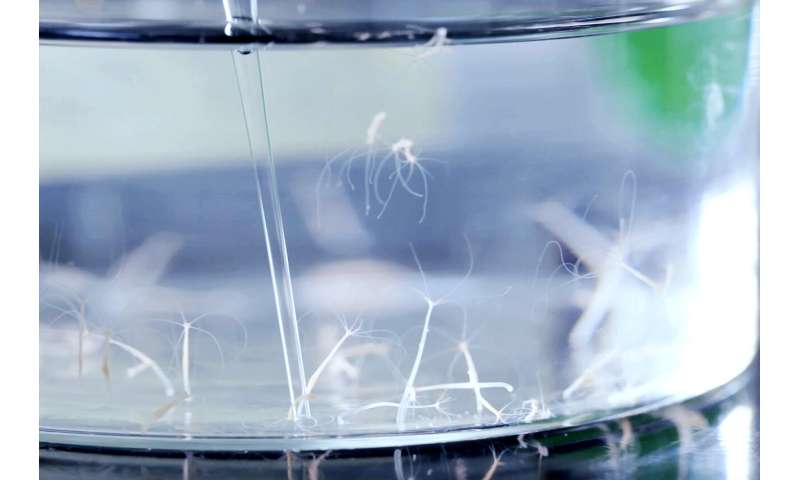How the microbiome is involved in the development of cancer


Despite significant advances in prevention and treatment of cancer, year after year there is a steady increase in the number of deaths caused by malignancy. In industrialised nations, one in every two or three people develops a form of cancer during the course of their life, and the trend is rising. For a long time, certain pathogens, in particular viruses and bacteria, have been considered as potential causes of cancer. Three viruses and one bacterium are recognized as risk factors: the human papillomavirus, the human hepatitis viruses B and C, as well as the bacterium Helicobacter pylori usually found in the stomach. But in addition to these well-known pathogens, does a healthy microbiome, i.e. the entirety and balance of microorganisms in the body, also play a role in the development of cancer?
A research team led by Professor Thomas Bosch at Kiel University has demonstrated, using the simple freshwater polyp Hydra as an experimental model, that after an environmental disruption of the normal bacterial community, the tissue of a host organism may be colonized by bacteria from the environment. The contact with already-present microbes then leads to the production of bacterial factors that have a damaging effect on the Hydra cell structures, and ultimately trigger tumor formation. The Kiel team published their research results, which were achieved in frame of the Collaborative Research Centre (CRC) 1182 “Origin and Function of Metaorganisms” at Kiel University, today in the renowned scientific journal PLOS Pathogens.
Evolutionary origins of cancer
The research team was prompted to use the evolutionary approach to cancer by their previous findings from work on the origins of cancer during the evolutionary history of life. Several years ago, the researchers already used the freshwater polyp Hydra, a phylogenetically ancient multicellular organism, to demonstrate that in principle all multicellular animals can form tumors. “We believe that cancer is a legacy of transition to multicellularity early in the evolution of life,” emphasised Dr. Alexander Klimovich, a researcher in the field of cell and developmental biology at Kiel University and leader of the study. “Since all multicellular organisms also possess a microbiome, and have evolved together with their microbial symbionts over millions of years, it is logical to hypothesize that the microorganisms are also involved in the development of cancer,” continued Klimovich.

Disrupted bacterial colonization triggers tumor formation
In laboratory experiments, the doctoral researcher Kai Rathje, a member of the research team, has now been able demonstrate such a causal involvement of individual bacterial species and their interactions within the microbiome in cnidarians. “Hydra develop cancer if a specific type of foreign bacteria from the phylum Spirochaetes becomes increasingly prevalent in the microbiome, and thereby disrupts the balance of the bacterial colonization in their tissue,” emphasized Klimovich. “Interestingly, these bacteria exert their harmful influence only in the presence of certain other bacteria from the genus Pseudomonas, which are part of the normal composition of the microbiome,” Klimovich continued.
Thus, the interaction of microbes with each other is involved in tumor formation in cnidarians, and the initial impulse also comes from the influence of the environment: the organisms initially acquire the harmful spirochaetes from the surrounding water. However, the invading bacteria successfully colonize the host tissue only if the Hydra tissue has already been weakened by changing factors in the environment. These factors include a change in temperature, and the resulting change in microbial colonization. The researchers were able to prove experimentally that spirochaetes and Pseudomonas bacteria from the natural microbiome interact with each other, and thereby both change their behavior dramatically. When they encounter each other, the bacteria modify their movement patterns and seek direct contact with one another. As a result, they also begin to express different genetic information and thereby in particular activate factors which have a pathogenic effect for the host organism. Due to these changes, the microbial balance in the tissue of the cnidarians becomes disrupted, which is followed by structural changes in the cells and ultimately to tumor formation. How these interactions occur at the molecular level, and which specific biochemical mechanisms are involved in this form of cancer development, are the subject of currently ongoing investigations.

The microbiome—gateway and protective barrier at the same time
“Our novel findings point to a universal principle which will expand our understanding of the pathogenesis of cancer—namely, as a comprehensive interaction of genetic and environmental factors, including specific microbial influences,” emphasized Professor Thomas Bosch, head of cell and developmental biology at Kiel University and spokesperson for the CRC 1182. “The new research findings show that an important aspect in the pathogenesis of cancer can be found in the context of microbial interactions—it was only the common presence of certain bacteria interacting with each other within a disturbed microbiome that enabled the formation of tumors in the case we investigated. Therefore, in many cases, it is probably not a single malicious intruder, but the malfunction of the microbiome as a protective barrier for the body as a whole what can promote the development of cancer,” added Bosch.
Source: Read Full Article